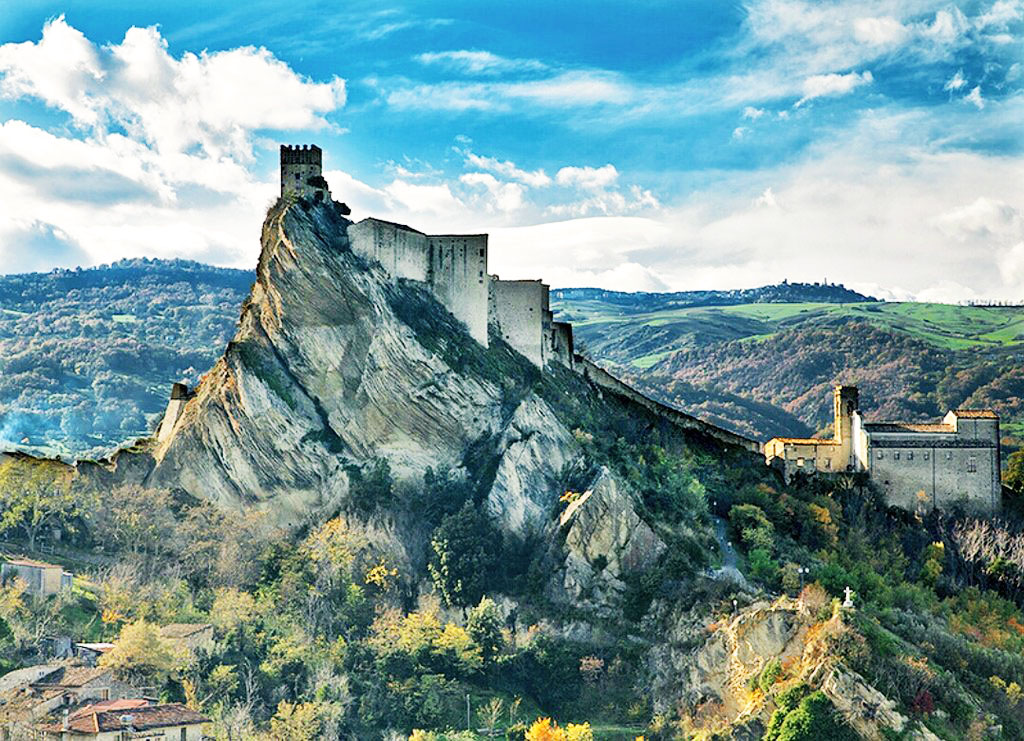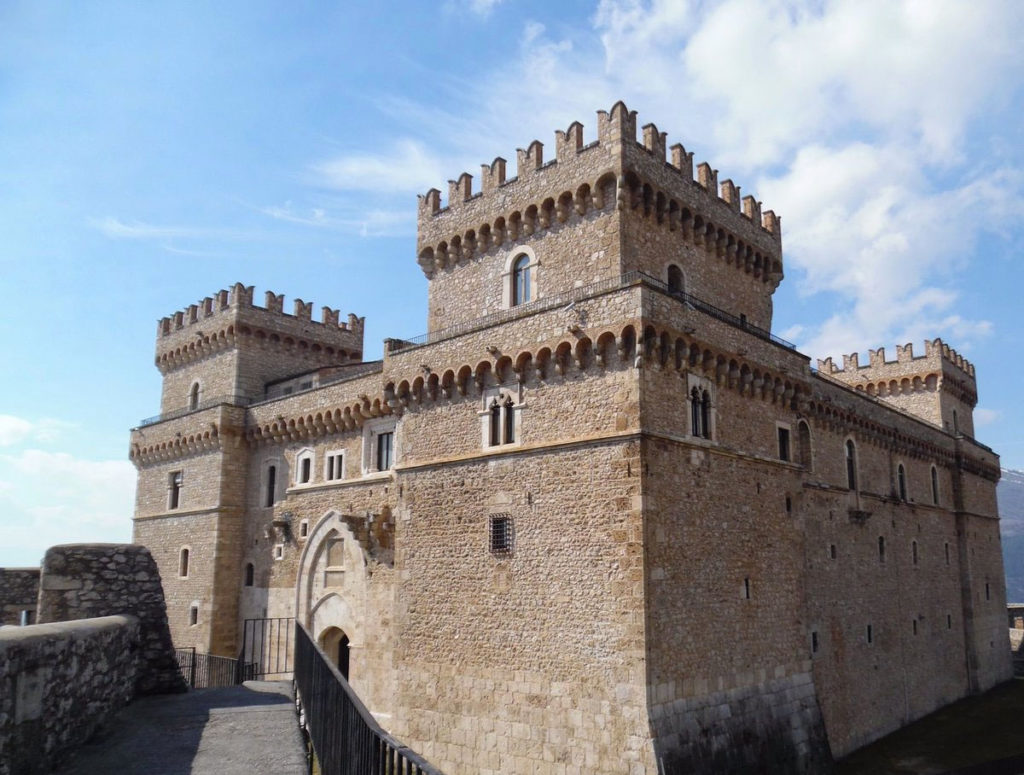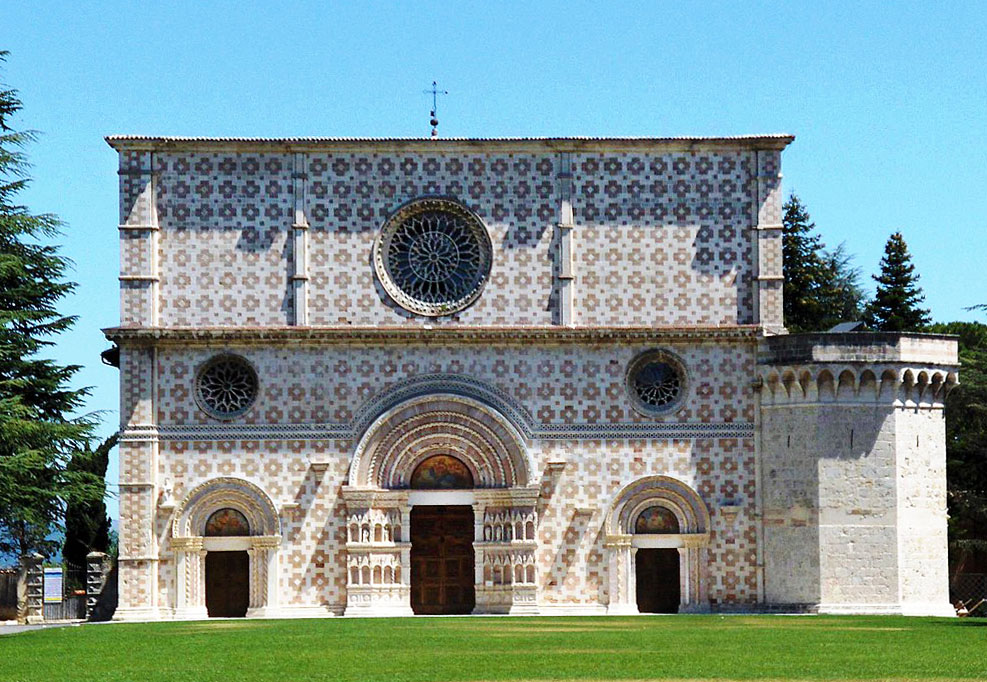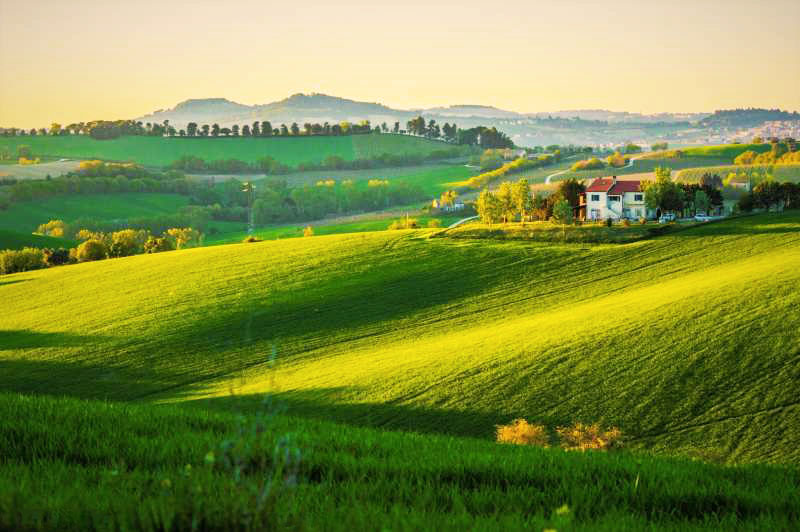Le Marche and Abruzzo
The hidden gems of Italy are often in areas overlooked by tourists and this week we visit two such regions. In central Italy, le Marche is set between the rising Apennine Mountains and the crystal clear Adriatic Sea, while directly south is Abruzzo, a stunning region that provides exciting and unforgettable opportunities.
Le Marche is one of the smallest regions in Italy and arguably one of the least well known. However, there is no doubting its hidden gems, with a wealth of sights to see. Its beautiful hilltop villages allow visitors to step back in time and 25 have been awarded the crown of being in the list of ‘the most beautiful villages in Italy.’ No matter where you choose to stay, the marchigiani welcome you with warmth and hospitality, sharing with you the passion they have for their region and traditions. The area is famous for its ceramica production which dates back to the Renaissance period and for the world famous paper of Fabriano, which tourists can see in the town of Filigrana at the aptly named Museo della Carta e della Filigrana.
Cingoli stands as a prime example of the wonderful villages to visit. Located in the heart of the region, this ancient town dates to the first century BC, when it was established as a strategic location for the Romans. Now it is known as the Il Balcone delle Marche – the Balcony of Marche, due to its lofty elevation of 2,130 feet. The hillside town boasts incredible views across the countryside all the way to the Adriatic Sea. Medieval churches dating to the 14th century abound, many containing notable works of art.
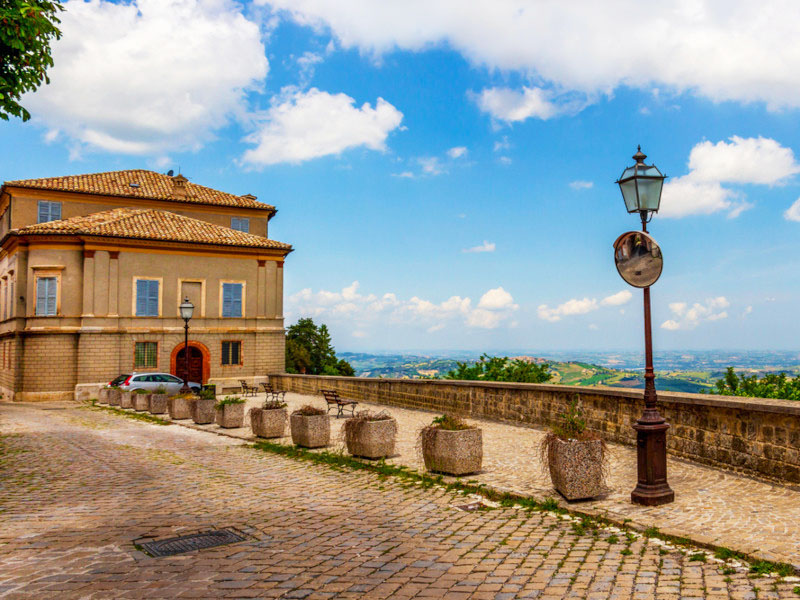
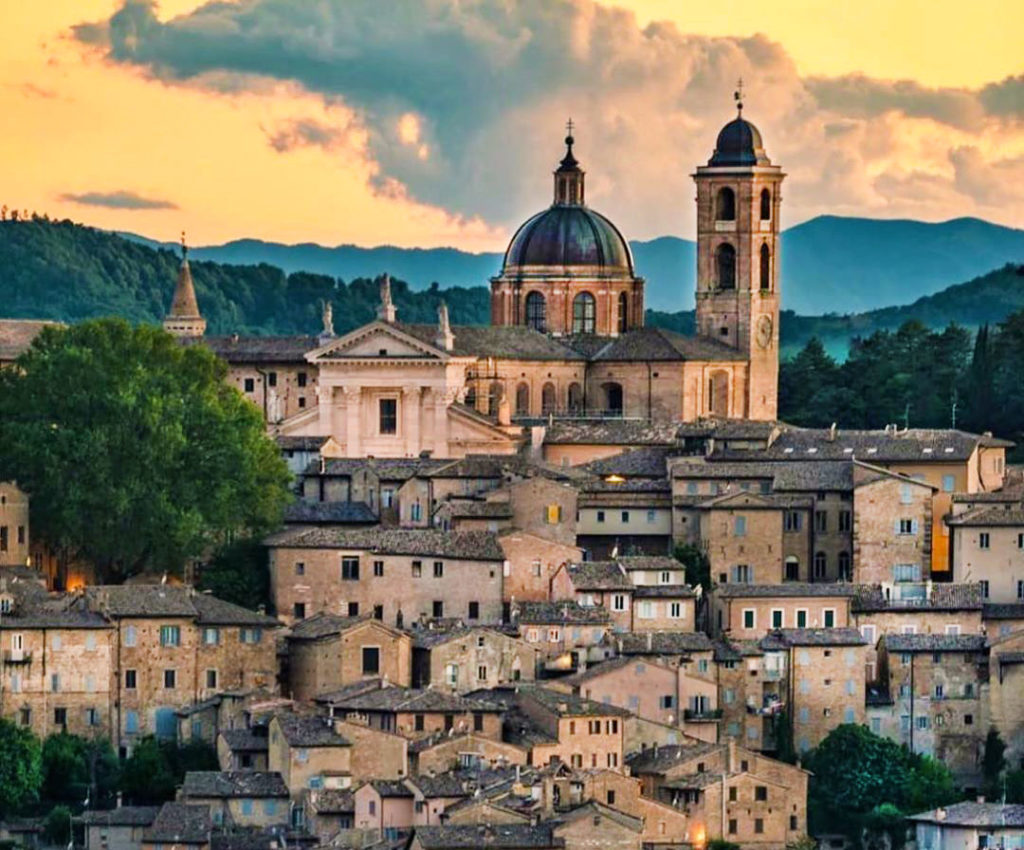
One of Le Marche’s most significant contributions to Italian culture is its shoemaking. Italy is famous for producing the finest leather goods in the world and in le Marche virtually every town contains at least one artisan cobbler, but it is Tod’s that is the name that people know. The company is located in the charming town of Sant’Elpidio a Mare and for those that want to do a little shopping, the largest Tod’s outlet is located just two miles from its headquarters in the lovely coastal town of Civitanova Marche, which dates to the 11th century. During the Renaissance, the Ducal Palace Cesarini Sforza was built in there which is popular for its cafés, restaurants and fine beach.
Those who are looking for traditional Italian luxury without crowds may find that Fermo is the perfect vacation destination. Situated on top of Sabulo Hill, two miles inland from the sea, it has beautiful views of the coastline and Le Marche’s rolling countryside. Its history dates back to the Etruscans and defensive walls from its Roman period still remain. Despite its historical importance, the town has remained surprisingly small. Fermo boasts beautiful architecture, including its Duomo – a Gothic cathedral completed in 1227. The town is filled with lovely historic buildings hugging narrow streets that beg to be explored on an adventure to this wonderful town.
Perched high up on one of Le Marche’s hills, Urbino is a city that delights both history buffs and culinary enthusiasts. The historic center of the walled city is a UNESCO World Heritage Site with a remarkable legacy of Renaissance culture. Its architecture, art and history will reveal undiscovered treasures for visitors as the small city, not much bigger than a town, has retained much of its picturesque 16th century charm. Palazzo Ducale houses Galleria Nazionale delle Marche, which contains one of the most important collections of Renaissance paintings in the world. The entire landscape is drenched in history. It is the birthplace of poets and writers, popes and painters. It was in Urbino that Raphael was born and his family’s house is now a museum. Such is its immense wealth of culture that it was recently named to a list of 50 places in the world that must be visited.
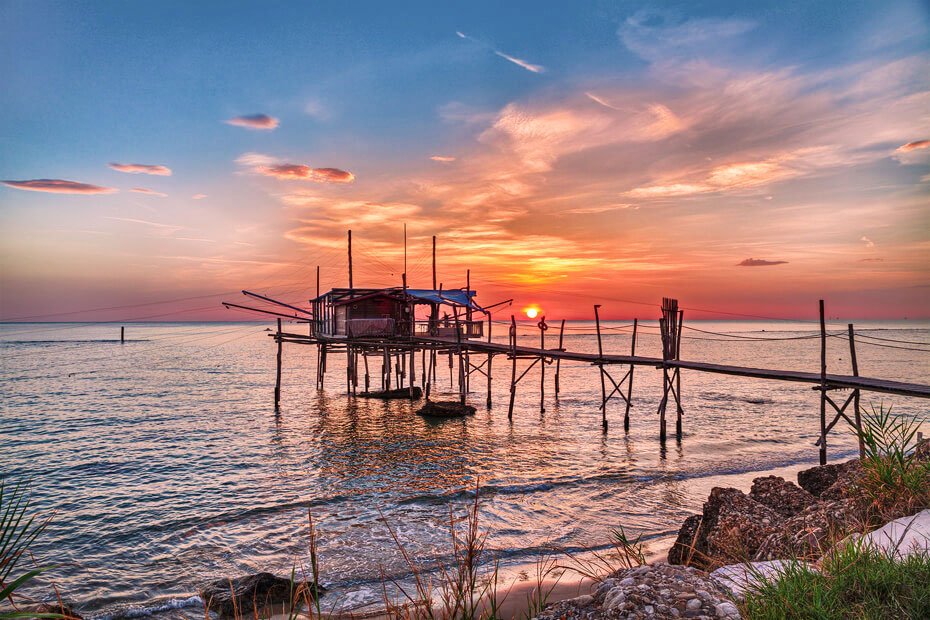
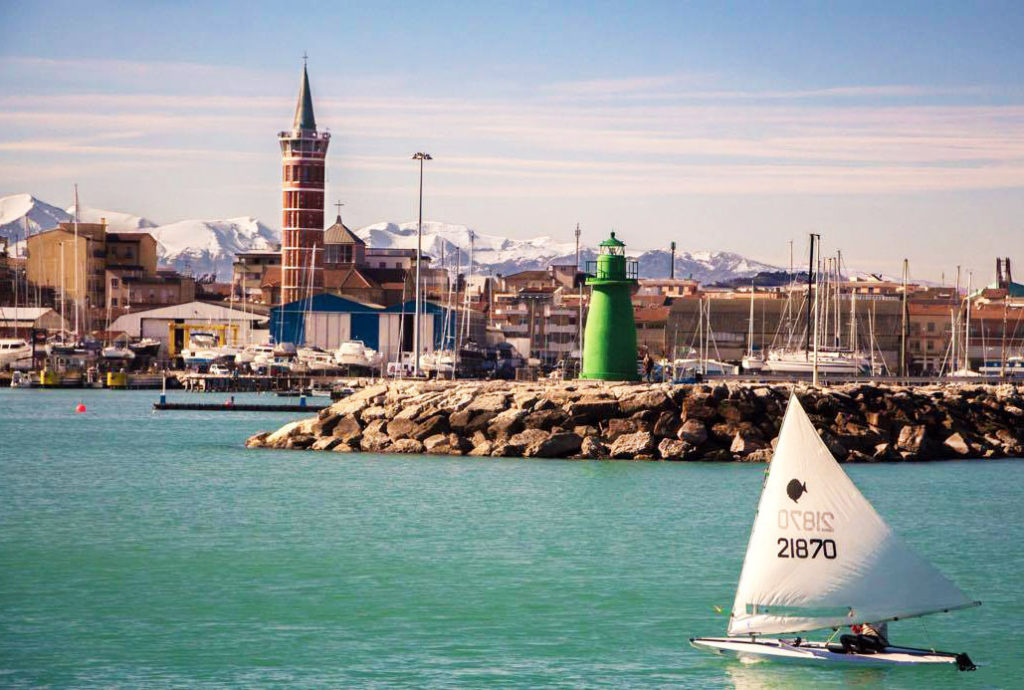
Located in the heart of the Italian countryside, Abruzzo is a stunning region that provides exciting and unforgettable views, with its wonderful lakes, the Adriatic coastline, pristine parks, breathtaking mountain ranges and enchanting medieval towns. You can lie in the sun on a beach along the Trabocchi coast and within an hour find yourself on the top of one of the ski resorts in the Majella National Park.
The Province of Chieti Castello di Roccascalegna sits perched on the edge of a rocky hilltop as it seems to emerge right out of the rocks. The castle dates to the 11th century, with additions added through the 15th century and it maintains a decidedly medieval atmosphere, complete with the remains of its drawbridge. Surrounded by the Majella Mountains, the view alone is worth a visit as its high-set location is ideal for panoramic viewing. The little village of Roccascalegna is a unique gem in itself and leads to the castle. A day trip here is a must if you want to experience the magic of the rustic, Italian countryside.
The Basilica of Santa Maria di Collemaggio is a masterpiece of Abruzzese Romanesque and Gothic architecture and is the most important church in provincial capital of L’Aquila. The Basilica, which is the largest church in Abruzzo, was built in 1287 and seven years later, was the site of Celestine V’s crowning as Pope. The Basilica contains his tomb. The façade has a unique pattern of blocks of alternating pink and white stone and makes the massive structure appear much smaller from a distance than it is. Each of the three doors are surmounted by a rose window and the interior is both impressive, yet understated. It was heavily damaged during the 2009 earthquake that devastated the city and underwent a privately-financed restoration afterwards, partially funded with money raised by the Italian Tribune.
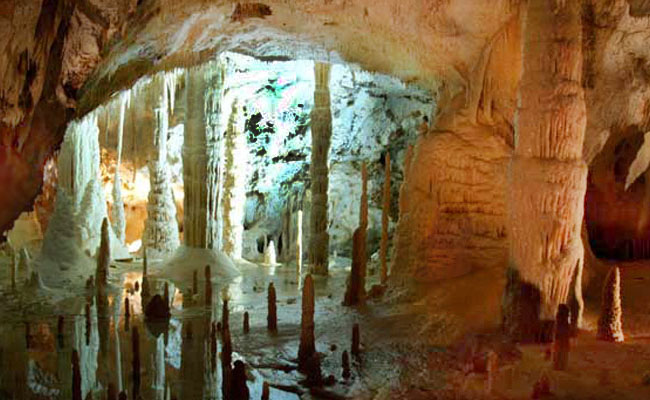
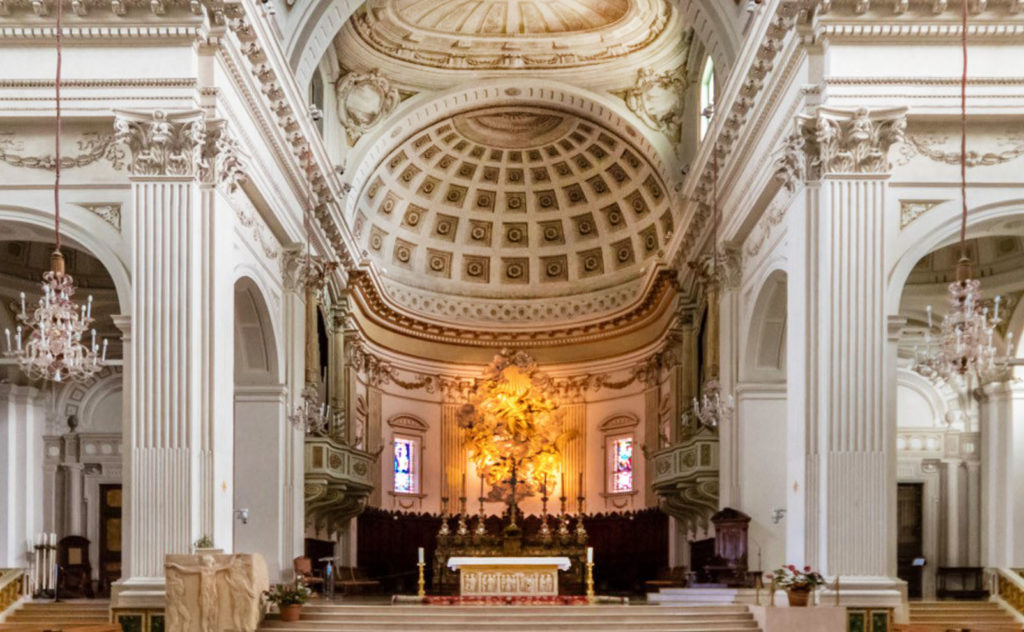
Not far from L’Aquila area is the amazing Grotte di Stiffe in San Demetrio Ne’ Vestini. These limestone caves were formed by Rio Gamberale, an underground river that is one of the few in Italy where the river re-emerges above ground. Inside the caves are beautiful caverns with stalactite and stalagmite formations, pools and waterfalls. Only a portion of the more than one mile-long cave is open to the public, since geologists have not explored the entire length yet. Amazingly, the site has only been open to the public for 30 years and its most fantastic feature, the Last Waterfall, has only be open since 2007. The power of the crashing waters from the 82-foot tall waterfalls makes it impossible to hear a person standing right next to you.
Castello Piccolomini in Celano was begun in 1392 and completed in three phases through 1463. An extensive restoration was completed 60 years ago. Make sure to walk around the historic center of Celano and then visit the castle. Nine rooms house the Museum of Sacred Art of the Marsica, where art from the sixth through 18th century is displayed. Afterwards, head to the Gorges of Aielli-Celano, some of the most important canyons in Italy, with a deep valley and spectacular rock walls nearly 700 feet high.
